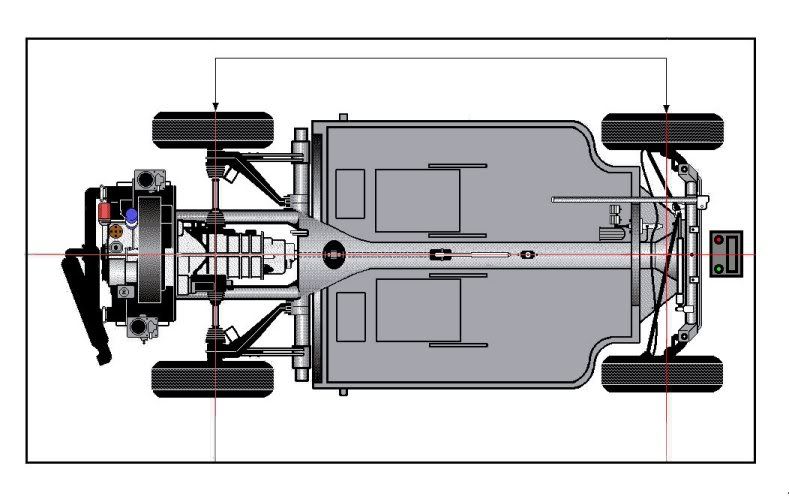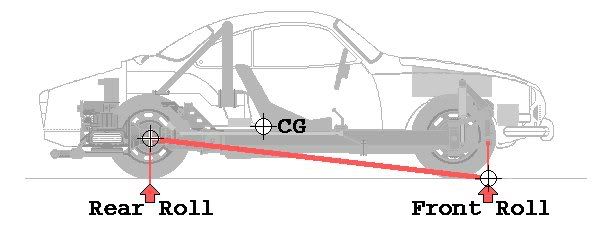
ABOVE: Karmann Ghia chassis
Way back when, all the front engine car guys were certain the Porsche would come to no good as a sports car because the engine was in the wrong place ... hung out behind the rear axle.
This put 60% of the weight on the rear end, when other cars had much more even weight distribution, especially the front "mid engine" types that placed the engine even farther back in the chassis.
Yet, even with the wrong weight distribution, Porsche won races. So it really wasn't all that bad.
Of course, Porsche people worked as hard as they could to even up weight distribution. The spare tire, fuel tank, and battery were up front, and of course the driver and passenger were ahead of the engine, which gave about a 47%-53% weight split.
The theoretically perfect road racing weight situation is to have the same weight on all four tires, and with a Formula-type car with the driver in the center and the engine inside the wheel base (rear mid engine), you can actually accomplish this.
A street car can't quite do the same thing because the driver has to sit on one side of the chassis or the other. And that makes a difference. On a right-hand drive car, you can turn left faster than turn right, meaning with less suspension loading. Ask autocrossers.
In fact, even with the added weight of a passenger, autocrossers usually report that the car handles better overall.
What can you do for your street car to help the weight distribution? Well, battery relocation is the place to start. The Ghia came with its battery back in the engine compartment. At least move it within the wheel base by locating it behind the passenger seat, a la VW sedan style. Better yet, if you're hard core, move your battery to the bottom of the spare tire well and carry your spare laid flat on top of the gas tank.
If you're really hard core, you'll strip out everything you can from the rear end of the car, and replace that heavy glass rear window with a nice Lexan one.
If you're road racing, you can take a cue from the NASCAR boys and jack a little weight around. A one-inch forward rake (don't do more than this or strange suspension responses will emerge) will shift even more weight forward.
The general rule is always lighten up, but lighten up in the rear first.
Our 1970 Ghia 53 road racer (fuel and driver) tips the scales at 2000lbs, 1200 of which ride on the rear tires, although not exactly 600lbs per tire.
FJC
